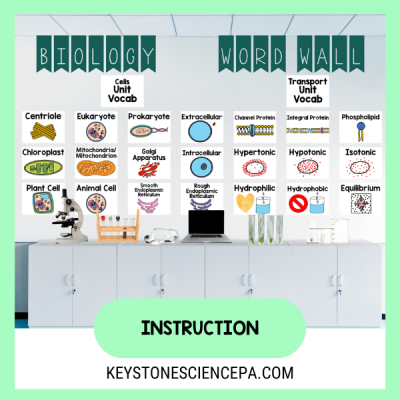Teaching complex scientific content is a challenge in itself for many students. For ELL students it can feel like a double challenge since it’s not just a matter of delivering complex scientific content but doing so while also supporting students’ language development.
One creative way that has helped ELL students (and really, all students) is using a word wall. Word walls are more than just a display of vocabulary terms in your classroom; they offer many benefits including creative opportunities for engagement, comprehension, and student success.
This post includes five ways to use word walls beyond hanging them on the wall of your classroom! With ideas like concept maps, sentence frames, and interactive games, these strategies will empower your ELL students to thrive in the science classroom.
Looking for more practical strategies? Make sure to grab the free ebook included at the end of this post. It’s packed with quick and easy tips to boost your students’ vocabulary skills!
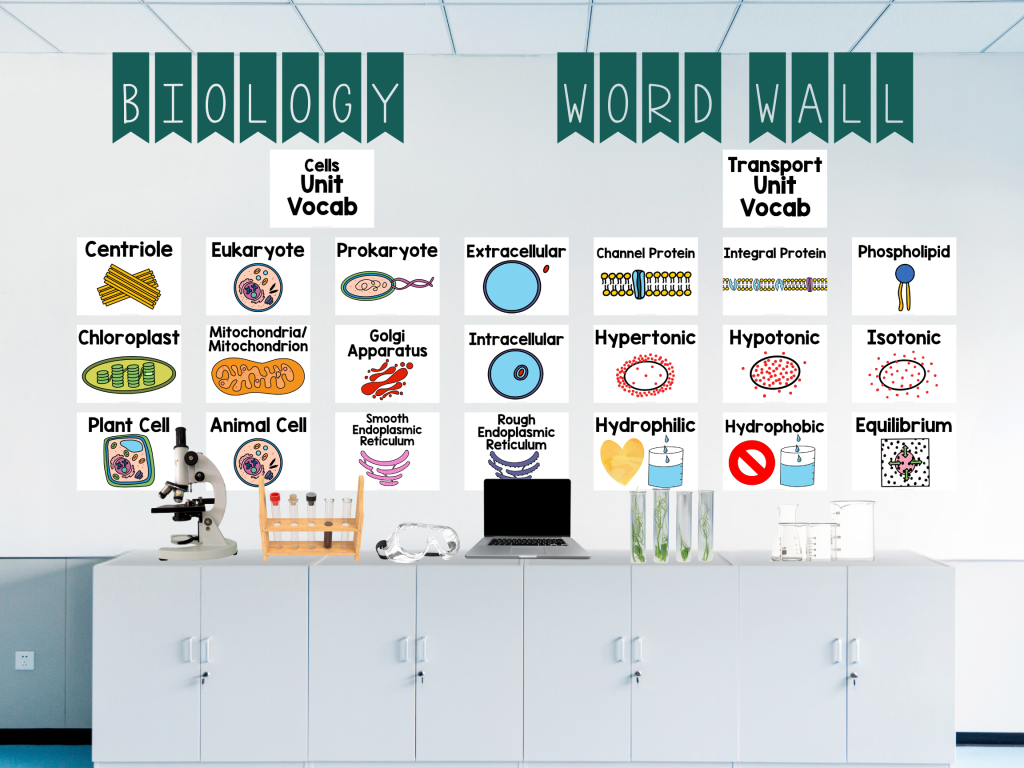
1. Build Concept Maps with Word Wall Cards
This option is all about printing, shuffling, and creating. Here’s how it works:
- Print word wall terms on small cards like these pre-made posters which you can print 4-6 per page.
- Have students group related terms into categories or shuffle them around to create concept maps to visualize relationships between key ideas.
Concept maps are an ideal choice because they’re not just about memorizing the vocabulary. Instead, it promotes deeper understanding by focusing on connections between words, not just definitions. Students see how vocabulary fits into larger concepts, which aids comprehension and retention.
Teacher Tip: I like to pair students with different language abilities for collaborative concept mapping. This always helps to build community in class by fostering peer learning and building academic language naturally.
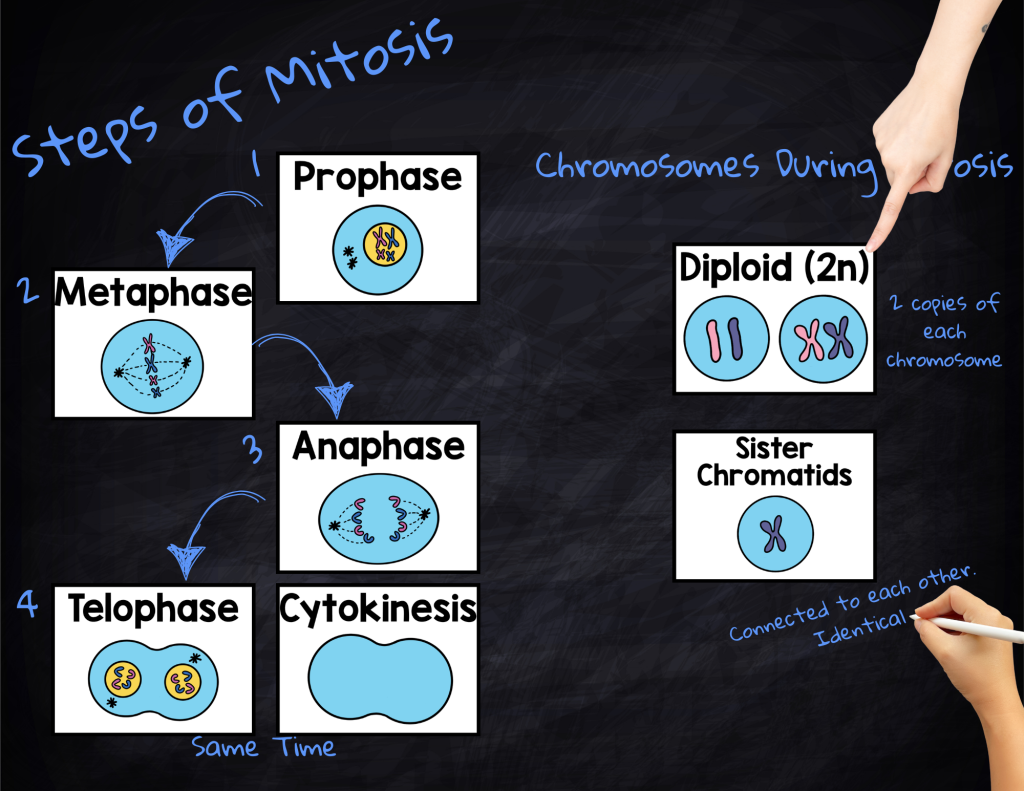
2. Interactive Vocabulary Stations with a Word Wall
Adding in interaction, particularly with some movement, is a great option for many students. A kinesthetic approach can make better connections for learning.
With terms on your word wall cards, you can create an interactive scavenger hunt. Set this up as stations where you provide clues that lead students to different vocabulary words. Ask students to describe the word, use it in a sentence, or sketch a diagram. Each instance is a way to retain vocabulary that is supported by research
(Robert J. Marzano explores academic vocabulary instruction in detail and outlines a 6-step process for effective explicit vocabulary instruction at every grade level. Check out this free webinar from Marzano and his associates for more details.)
Movement and hands-on activities boost engagement and memory retention. By applying vocabulary in context, students connect words to real-world applications.
Teacher Tip: This strategy also works well as a review before a quiz or exam—it encourages repetition without being repetitive.
3. Support Sentence Frames and STEM Discussions with Word Wall Terms
For ELL students, providing sentence frames using word wall terms scaffolds class discussions and supports students’ success.
For example, during a unit on ecosystems, give students a frame like: “The relationship between ___ and ___ is an example of ___. This is ____ because ___.” In this instance, sample terms that could fill in these blanks are eagle, fish, and predation. The final part of the sentence is where students would fill in their reasoning to support their choices, which leads to an explanation of the concept in their own words.

Sentence frames lower the barrier to participation, giving students confidence to contribute meaningfully in both oral and written discussions. It also reinforces language development through the proper use of academic vocabulary in context.
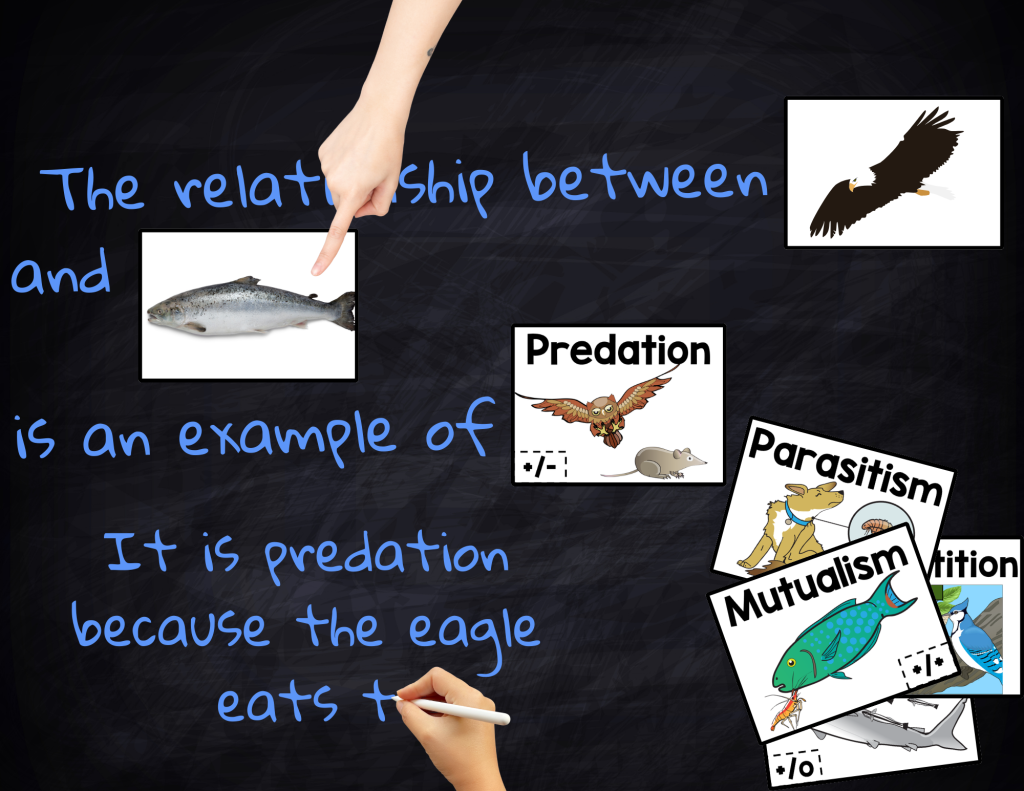
Teacher Tip: I like to have a word wall up for an entire unit and encourage students to refer to the word wall during discussions or written tasks. I’ve found this builds confidence and promotes self-directed learning.
4. Play a Card Game to Practice Terms
Keep the word wall terms on the wall and print a set of cards with the vocabulary terms and a matching set with images illustrating each term. You can make multiple sets so students can play a Go Fish-style game; laminate them and they can be used more than once!
The instructions for the game are straightforward so even if your students have never played the game, they’ll be able to pick it up quite quickly.
In groups of 3 or 4, distribute 3-4 cards per student. Then they will ask each other for specific matches (e.g., “Do you have the image for evaporation?”). If the other player has it, they hand it over; if not, they say, “Go Fish!” and the student draws from the deck. The game continues until all the matches are made, and the player with the most matches wins!
This reinforces vocabulary through visual connections. Matching images with vocabulary terms builds dual-coding skills, which improve memory and comprehension by pairing verbal and visual information.
What’s more, this encourages peer interaction. The game gives ELL students frequent opportunities to speak and listen in a fun, low-pressure environment, helping them develop language skills while engaging with the content.
And finally, this is the chance to use the vocabulary terms again. The repetition through play embedded in the game helps students retain vocabulary without the boredom of traditional flashcards.
Teacher Tip: Encourage students to make their own decks with new terms throughout the year. This way, they can play again as new concepts are introduced! Plus, this could be a great way to review before exam day. For an extra challenge, have students describe the term before they can make a match to reinforce understanding.
5. Use Word Wall Games for Reinforcement and Review
This post included an option to use visuals and vocabulary through a card game, but you can also incorporate your word wall into low-prep classroom games. Play games like:
- Vocabulary Bingo: Students fill bingo cards with word wall terms and mark off words as they hear them used in discussion or read aloud. Have then create their own cards at the start of the unit with all the vocabulary they will learn that unit. I get them to do it in pen or marker so there’s no erasing to shuffle words into different spots. You might encourage students by having a ‘winner’ for a completed line in any direction and then a final ‘winner’ for a full card.
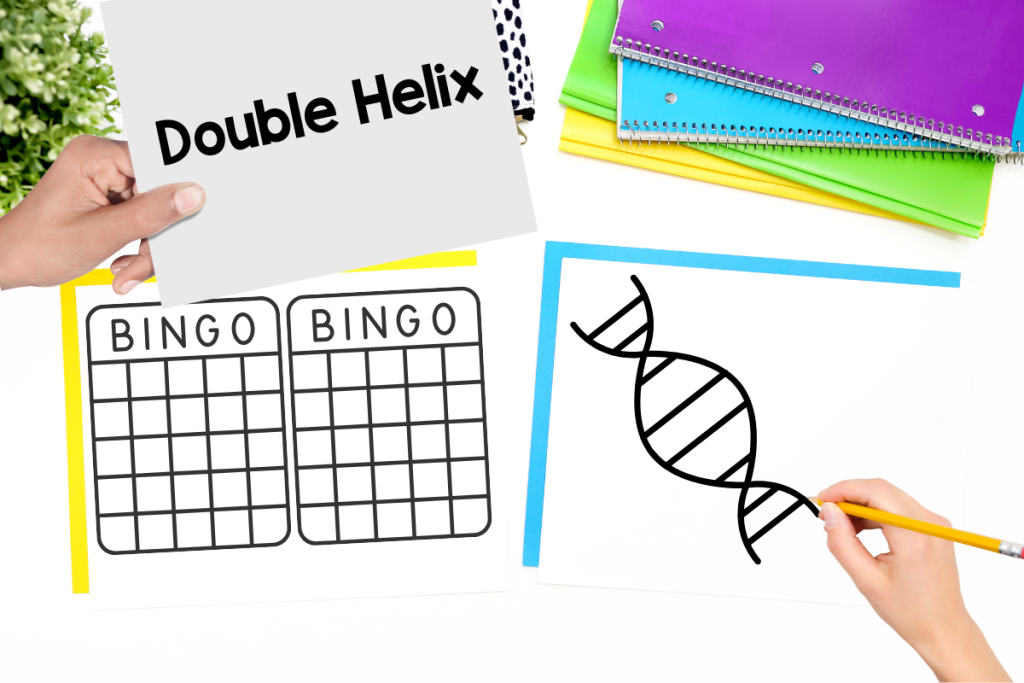
- Guess the Word: One student gives clues about a word without saying it, and the others guess the correct word from the word wall. This is really helpful for ELLs if they are paired with a fellow ELL student. They can give each other clues in their native language but they are identifying the English term.
- Draw the Word: This one is an extension of visuals and vocabulary so it might seem a bit repetitive but it’s repetition with a difference. Students pick a term and try to get their partner or small group to guess the term by drawing clues. My students love to use their small whiteboards to do this as part of their review process.
Once again, these are ways to reinforce word wall terms through repetition and usage in a low-stakes environment that incorporates interaction, communication, and a bit of fun for ELL students.
Teacher Tip: Make games part of your classroom routine to keep vocabulary practice fresh and fun. I like to start by doing one game at a time so students can experience them all. Then, as we get later in the year, I provide choice for which game they’d like to play. This helps them reflect on what will help them learn best.
Download my eBook!
These word wall strategies are just the beginning! For even more practical ideas to support your ELL students, download my free ebook: Vocabulary Strategies to Support ELL Students in the Classroom. You’ll get tips on using word walls, sentence frames, visuals, and more to boost engagement and learning.
Download your free copy today!
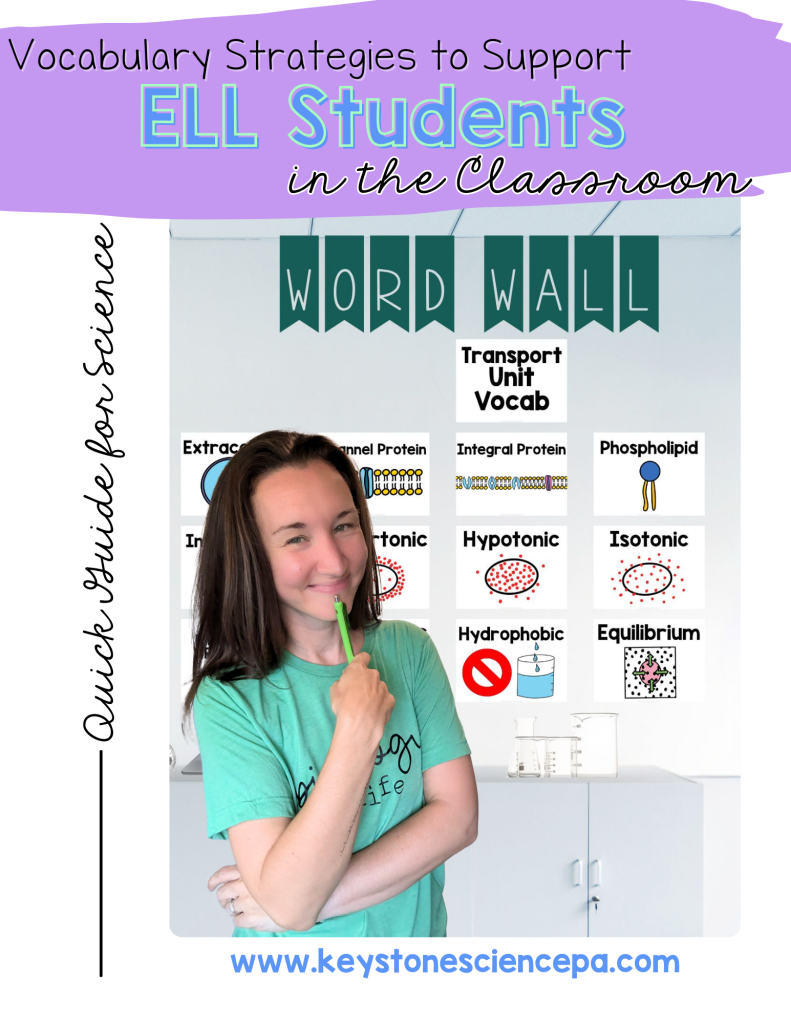
Final Thoughts
Word walls are a powerful tool for every student, especially the English Language Learners (ELLs) in our classrooms because word walls do more than teach definitions! Word walls support deeper thinking, encourage collaboration, and help students make meaningful connections in science.
Word walls also connect to 3D learning and crosscutting concepts by helping students identify patterns and relationships between scientific concepts. Read more about 3D Learning in this post and Phenomena-Based Learning in this post.
Don’t miss out! Grab my free ebook and start transforming how you teach vocabulary in your classroom today!
Looking Ahead
The next post will provide 3 easy steps to adapt an existing lab to be NGSS-aligned and phenomenon-based. I shared this with teachers in my presentation for the Pennsylvania PA Science Teacher Association’s annual conference and it was so well received that I know more teachers will benefit. This post is about shifting from a traditional “sage on the stage” teaching style to a student-centered, inquiry-based approach that should help make your classroom more “AI-proof”!
Let’s Connect
💡Feel free to explore Keystone Science for ready-to-use high school chemistry, biology, ecology NGSS aligned notes and activities.
💡Subscribe to my email list for weekly tips direct to your inbox.
💡Follow me on Instagram for daily tips, motivation, and facts you can use in your classroom!
🌟Share in the comments or email me directly 👉🏻 [email protected]







